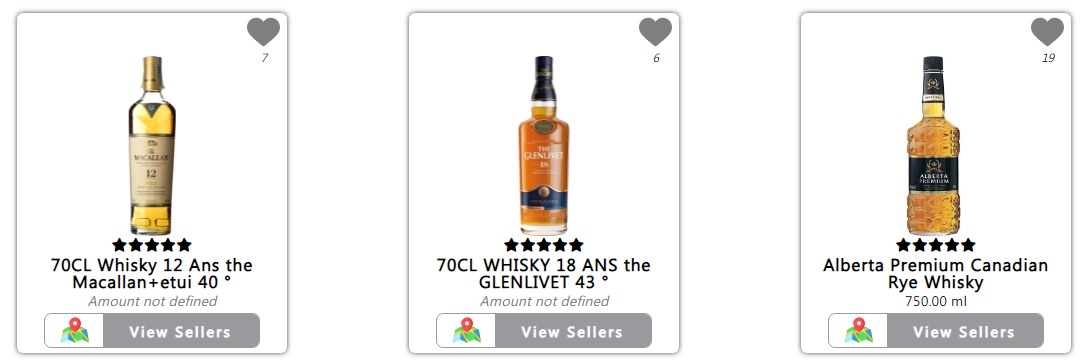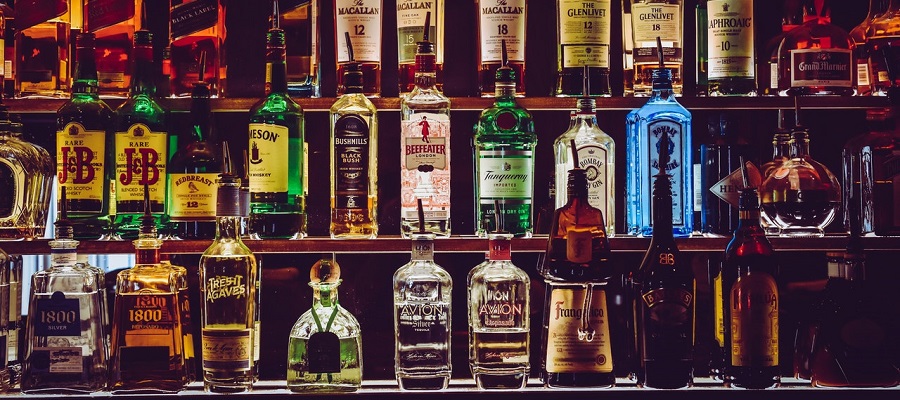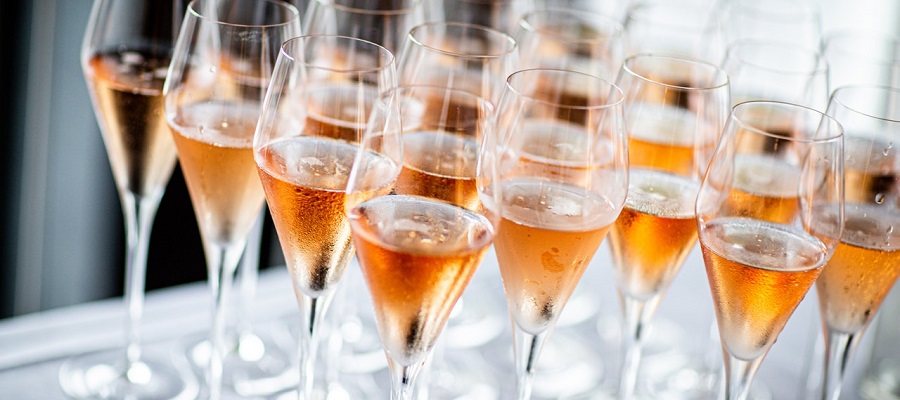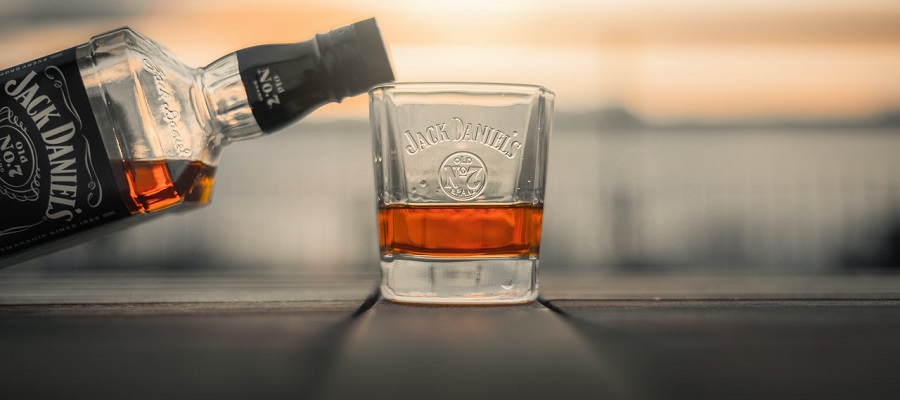Grain Whisky, Rye Whisky, Corn Whisky, Burbon, Blended Scotch and of course the Single Malt Whisky. All these varieties and important whiskey terms we cover in this article.
Whiskey a spirit produced from surprisingly few basic ingredients, essentially grain, water and yeast in a distillation process. Subsequently, this raw spirit matures in wooden barrels. The quality and composition of the water, the processing of the grain, the numerous variations of the distillation process and the types of barrels as well as the maturing time spent in them determine the taste of the whiskey. Above all, the different types of barrels are significantly involved in the formation of taste. See also the following article on storage & cask types. However, there are also guidelines that partially limit the variety of production. Example: Whisky of any type is the default, which states that the spirit must be bottled with at least 40% alcohol. For this purpose, the various categories of whiskey each have their own guidelines related to the place and name, by which they can be distinguished from the others.
Whisky is commercially available under different names. On the one hand, the different type of grain from which the whiskey was made is named:
-
Grain whisky refers to distillates made from wheat, unmalted barley and oats and/or rye (in Canada and the U.S.) and/or corn (in the U.S.). They are used almost exclusively for blended whiskies.
-
Rye whiskey refers to whiskey made predominantly from rye (min. 51%).
-
Bourbon refers to whiskey made predominantly from corn (min. 51%).
-
Corn refers to whiskey made predominantly from corn (min. 80%).
-
Malt refers to whiskey made exclusively from malted barley.
Where you can buy Whisky
Visit our food Index database and search for the Whisky of your choice. We have plenty of sellers listed.

Here now some of the most important types of whiskey:
First, the malt whiskey, it is for many whiskey fans the Olympus of whiskey making. This variety is the oldest surviving origin of whiskey production. In the malt whisky is specified that the grain used must be 100% malted barley and the whiskey must mature at least three years in the barrel. There are two categories that are subordinate to the malt: the single malt whisky and the blended malt whisky (also called vatted malt). A single malt whisky contains the product from only one distillery, whereas a blended malt involves several distilleries whose products are blended together.
A blend is a mixture (blend) of different whiskies. Grain whisky (continuously distilled whisky from different grains) is often used as the basis for a blend, and in some cases up to 50 other whiskies are added. In Scotland, the following types of blends are distinguished:
-
Blended Malt (also Vatted or Pure Malt): The whiskey comes from the barrels of different distilleries and was made entirely from malted barley. A well-known blended malt is, for example, Johnnie Walker Green Label.
-
The blended (Scotch) whiskey is always a mixture of different distillates from malted and unmalted grain. It is a separate category that exists alongside the malt whisky. In its classic form, it is a blend of malt whisky and grain whisky. Grain is generally less intense and milder than a malt whisky. In a blend, therefore, usually come the malt whiskies used for the taste. Blended whiskies are not only produced in Scotland, but also in Canada, for example, there is almost exclusively this variation of whisky. There, a high-proof distilled whisky is used as the base, which is then blended with milder distillates. Grain whiskey can also be bottled individually as single grain.
-
The blended (Scotch) whiskey is always a mixture of different distillates from malted and unmalted grain. It is a separate category that exists alongside the malt whisky. In its classic form, it is a blend of malt whisky and grain whisky. Grain is generally less intense and milder than a malt whisky. In a blend, therefore, usually come the malt whiskies used for the taste. Blended whiskies are not only produced in Scotland, but also in Canada, for example, there is almost exclusively this variation of whisky. There, a high-proof distilled whisky is used as the base, which is then blended with milder distillates. Grain whiskey can also be bottled individually as single grain.
In the USA, bourbon is the classic. It comes to a large extent from Kentucky. Despite the higher corn content, a proportion of barley malt will always be needed for production, because this drives the conversion of starch to sugar. Further, burbon is mandated by guidelines in the U.S. that bourbon can only be aged in "fresh", charred oak barrels. Therefore, producers of single malt can draw on the many discarded barrels from the U.S. and store their whiskey in them.
Rye whiskey also originates from America. Although this type of whiskey has the longest tradition in America, it is produced very little today. Probably this loss of popularity is due to the yet very idiosyncratic character. The high rye content creates a bitter dryness in the mouth, which does not please everyone.
Finally, of course, there is the Scotch. When we talk about a Scotch Whisky, it means that the whisky was distilled and stored in Scotland. What is allowed to be called Scotch and what is not, is precisely regulated. (The Scotch Whisky Order/United Kingdom) Thus, a whisky may only be called Scotch if it has been in a cask in Scotland for at least three years after distillation. Whiskies from America, Ireland or Japan may be called single malt whisky, but not Scotch. Irish and American products are usually called whiskey.
Background knowledge - Important whisky terms
-
Raw spirit (New Spirit): New Spirit is the term used to describe fresh distillates that meet the minimum requirements for whiskey as defined.
-
Cask strength: No more water was added to a whisky before bottling. The alcohol content of these whiskies varies depending on the length of storage, environmental conditions, the quality of the cask and, last but not least, the alcohol content of the original distillate. Cask Strength has nothing directly to do with alcohol content. A blend of different casks from one distillery has cask strength as long as no water has been added.
-
Vintage Whisky (Vintage): The whiskey used is from the designated vintage.
-
Single cask (single cask / barrel): The whiskey comes from a single barrel and is not mixed with other barrels. Usually the bottles are numbered consecutively. The quality can be different for each different bottling.
-
Finish: Many distilleries additionally re-store the whiskey in other types of barrels for a certain period of time. The distilleries give an indication of the origin of the barrels used to store the whiskey. For example: "Port Wood Finish" means that the whisky was (partially) stored in disused port wine casks. See also: Whisky finish.
-
And of course: Slàinte mhath. This is a Scottish toast that means something like "to health". This is because slàinte means "health" in Gaelic and "mhath" translates as "good". The root word slán is related to the German word "seelig" and the Latin "salus" for health. Even today people toast each other with "santé" in France and with "salute" in Italy ;-)
If you're searching for a similar contribution on champagne, read this contribution.


